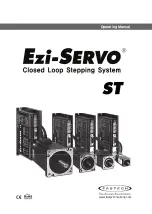
96
ADV200 SP • Quick start up guide - Specification and installation
The technical data of the fuses, e.g. dimensions, weights, heat dissipation, auxiliary contactors, are reported in the Eaton -
Bussmann data sheets.
Note!
The fuses must have gPV type breaking characteristics, a 1000V rating and a current rating that does not exceed the
manufacturer’s recommendations for panel protection.
To ensure that the system can be completely disconnected on both sides, each string should be protected with two
fuses, one at each pole.
Normally the rated current of the fuse must be between 1.25 and 2 times the panel’s Isc (short circuit current):
1,25*Isc ≤ Infuse ≤ 2*Isc
.
The string fuse ensures protection against reverse currents, since the possibility that the blocking diode may short-
circuit is considered.
Normally, a photovoltaic panel can withstand a reverse current between 2.5 and 3 times its Isc.
Once the fuse breaking capacity has been defined, make sure that the minimum current at which the fuse is guaran-
teed to break (specification to be requested from the manufacturer) is lower than the maximum reverse current that
can be withstood by the photovoltaic panels:
I min fusibile < Imax inversa
Realistic values for a fuse’s minimum breaking current are around 2 times its rated current.
If the DC cables connecting the inverter are sized for a current of 1.25*Isc*n, where n is the number of strings in
parallel, then it is not necessary to protect the cable at the inverter output from overloads, but only from short circuits.
Therefore, the DC fuses used at the inverter output should also be 1000V gPV fuses, used only for short circuit protec-
tion in the event of a ground fault.
Содержание ADV200 SP Series
Страница 105: ......











































